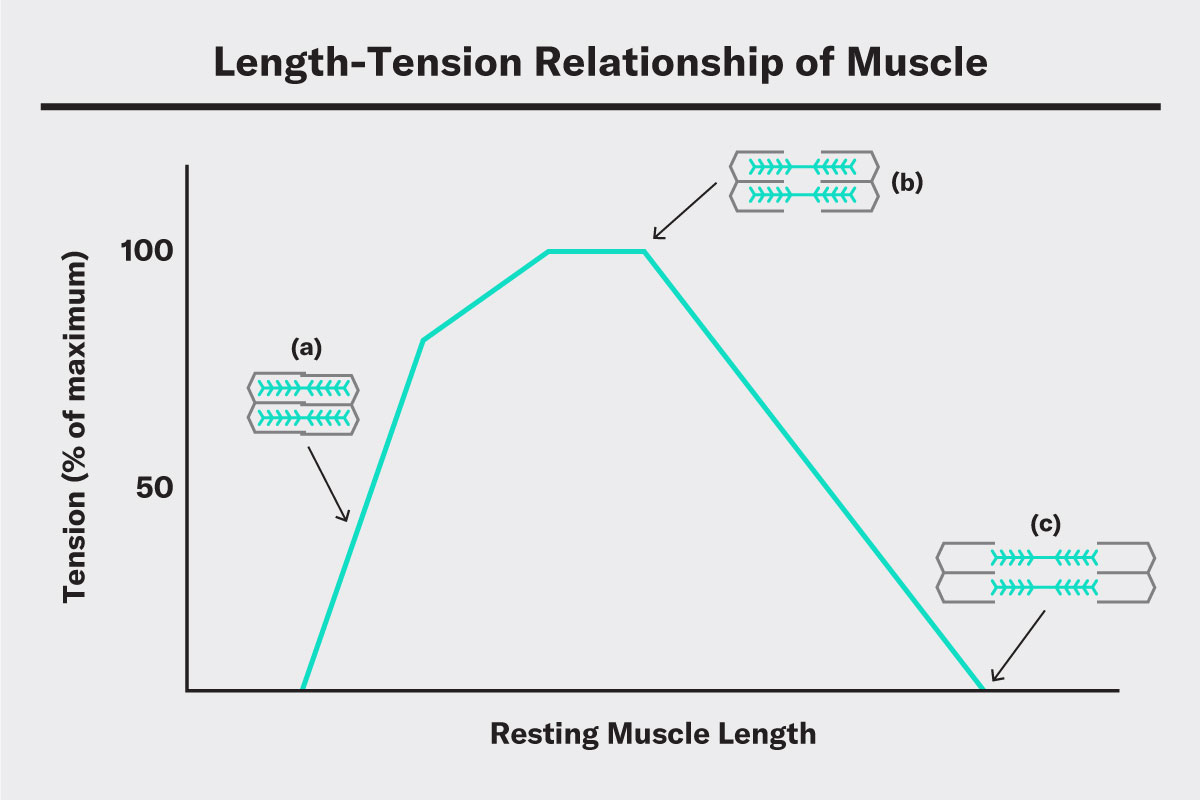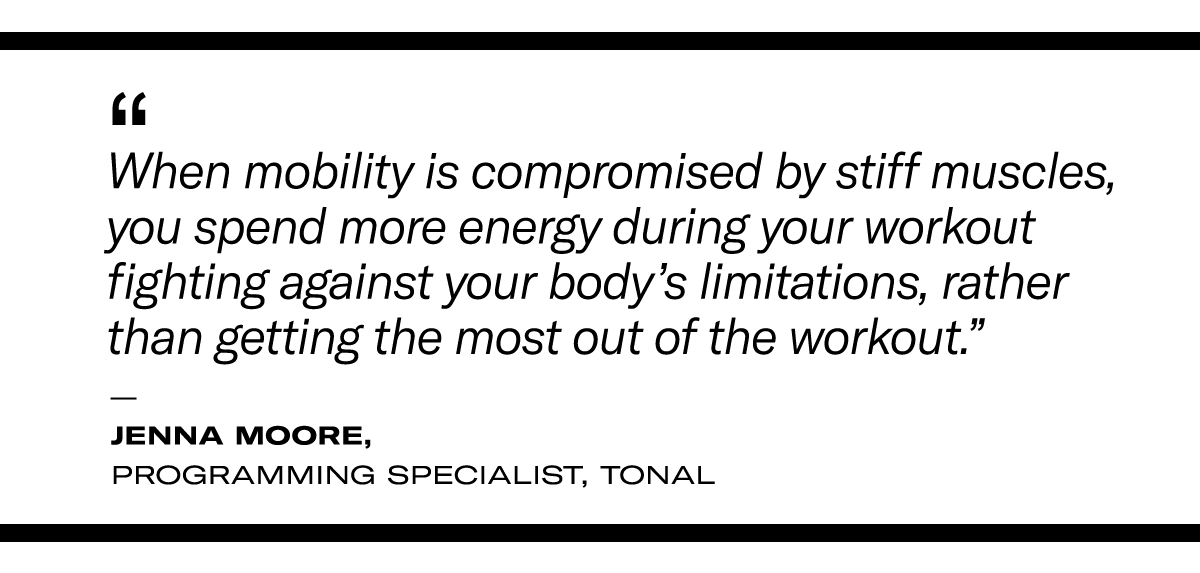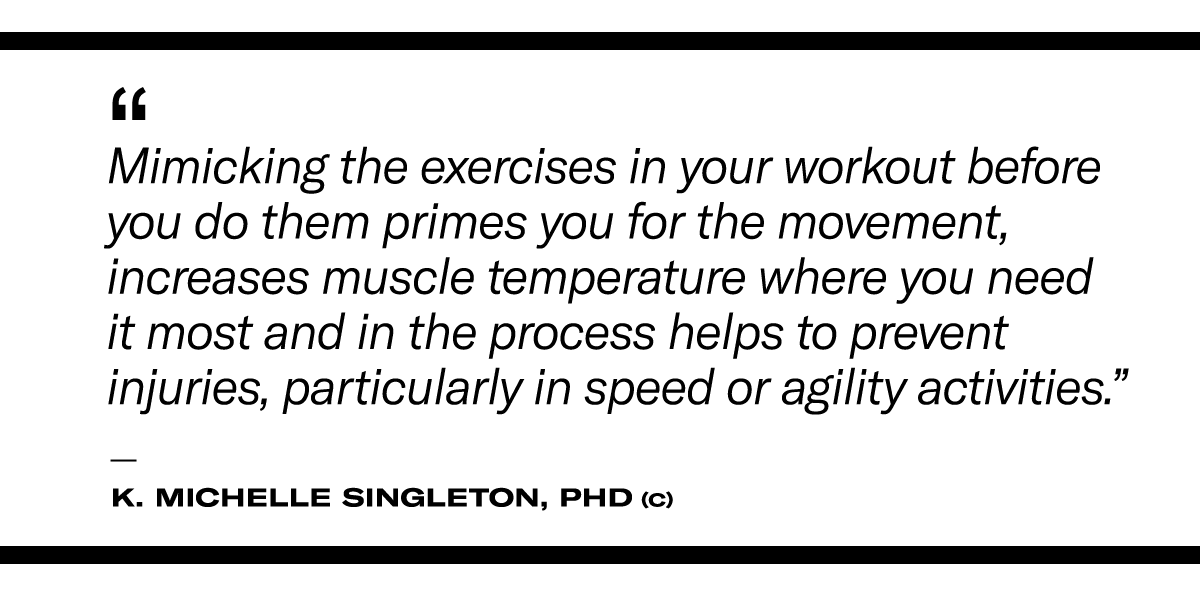Stretching is important, but when and how you stretch matters even more.
Stretching is an important addition to your workout routine, to both prime your muscles for your workout and to wind down afterwards. But should you stretch before the workout, or afterwards? There have been differing opinions on this topic, with some people forgoing stretching altogether. Ultimately, the science shows stretching aids performance—it just comes down to timing the most advantageous type of stretching for your workout and goals.
Here’s what you need to know about when to stretch and how.
Should You Stretch Before Your Workout?
Yes–but it depends on the type of stretch. Dynamic stretching is your best bet to warm-up for your workout. This consists of moving actively through a joint’s normal range of motion without holding for a specific length of time (think movements such as glute bridges, cat/cow, runners lunge, knee hugs, inchworms). “The major benefit is that once your body has access to this expanded range of motion, it can build strength within it, allowing for more optimized athletic performance,” says Liz Letchford, PhD, certified athletic trainer, and Tonal coach.
Dynamic stretching is going to help you work through muscle stiffness and joint restrictions that come from everyday life, like sitting at a desk all day, explains Jenna Moore, certified strength and conditioning coach and Programming Specialist at Tonal. “When mobility is compromised by stiff muscles, you spend more energy during your workout fighting against your body’s limitations, rather than getting the most out of the workout,” Moore says.
On the other hand, static stretching, like holding a hamstring stretch for 60 seconds right before you go into a max-effort squat, might not be the best idea. Research shows there’s a small dip in strength and power performance pairing a stretch lasting a minute or more with a heavy strength or power exercise.
This may be due to what’s happening within the muscle itself. Just like Goldilocks trying to find the porridge that’s just right, you want to find a balance between starting a workout feeling stiff and being too limber. If your muscle is too tight, there isn’t enough space in the muscle to contract and shorten (A on the graph below). If the muscle is too stretched, like after an extensive session of touching your toes or if you are hypermobile, not enough of the muscle fibers overlap to powerfully contract (C on the graph below). This is called the length-tension relationship between muscle length (either helped or hindered by flexibility) and the tension (strength of contraction) the muscle can create. For example, without strong muscle contractions in your glutes or hamstrings, you could be leaving strength gains on the table in your squats or deadlifts.

While stretching too much directly before your workout may impact your performance when your goal is max power or max strength, the effects will most likely be negligible if your goals are general fitness. If you do include static stretching in your warm-up, try following up with dynamic, movement-specific exercises that mirror the moves in your workout before getting started.
Should You Stretch After Your Workout?
You can still capitalize on all the benefits of stretching, like injury prevention, without any potential loss in strength and power by saving the static holds for post-workout. According to a study published in Sports Medicine, at least 30 percent of all injuries seen in sports medicine clinics are due to skeletal muscle (like muscle sprains and strains).
Stretching regularly can help to prevent some of those injuries. “From an athletic trainer’s perspective, developing a proper stretching regimen, utilizing both static and dynamic stretching, may reduce muscle stiffness and increase range of motion, reducing your overall risk of injury,” says Michelle Singleton, a certified athletic trainer and lecturer of exercise science at Coastal Carolina University.
Stretching regularly may also pay off in performance, because your muscles become longer at rest. A muscle with an optimum length-tension relationship can generate more force and muscle activation, translating to increased power, strength, speed, and jump performance. The more force you can produce, across a wider range of motion, the faster and more powerful you can move.

How Can You Incorporate Stretching into Your Workout Routine?
Carving out time for stretching before and after your training session ensures you’re always working at your full potential during your workouts. Here are some simple guidelines for your dynamic and static stretching routines.
Dynamic Stretching
Your warm-up is the perfect time to incorporate dynamic stretching. Choose dynamic movements that are similar to what you’re about to perform in your workout, suggests Singleton. “Mimicking the exercises in your workout before you do them primes you for the movement, increases muscle temperature where you need it most and in the process helps to prevent injuries, particularly in speed or agility activities.”
This might look like moving through a runner’s lunge and sumo squat stretch before a workout that includes heavy Bulgarian split squat, deadlifts, and squats or floor slides and prone shoulder sweeps before lat-pulldowns and rows.
Letchford recommends focusing on your breath and body awareness throughout your dynamic stretches to provide a foundation for your nervous system to mimic this expanded range of motion in your workout.

Static Stretching
Perform static stretching after your workout or anytime throughout your day. When you stretch outside of your workout, be sure to include a light bodyweight warm-up. Moore recommends participating in static flexibility training at least two to three times per week, but says it’s most effective to stretch daily. In addition to stretches for the muscles you engage in your workout that day, hit all of the major muscle groups and only stretch as far as you feel tension in the muscle, not pain.
“Holding each stretch for 10 to 30 seconds will be enough for most individuals, but older adults or more advanced exercisers may benefit from 30 to 60 seconds or more,” notes Moore. You can follow those guidelines loosely and tune into what feels good for you.
Additionally, Letchford advises, static stretches are a great way to wind down and center yourself. “You should practice static stretching only when you are in both a calm external and internal environment,” she says, “The goal of static stretching is to create space within a fascial system, joint, or muscle tendon in order to then build strength and protection around that expanded state.”



